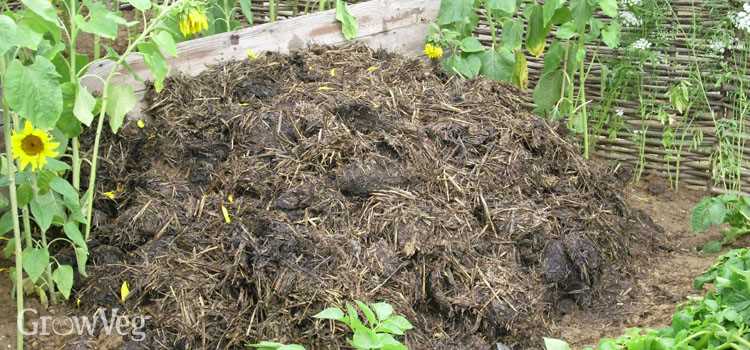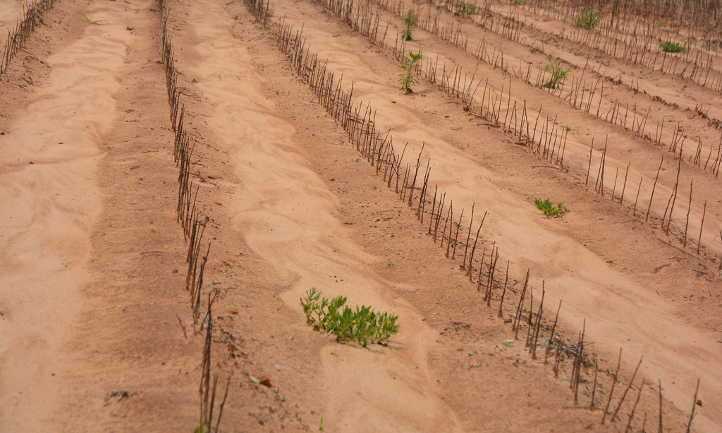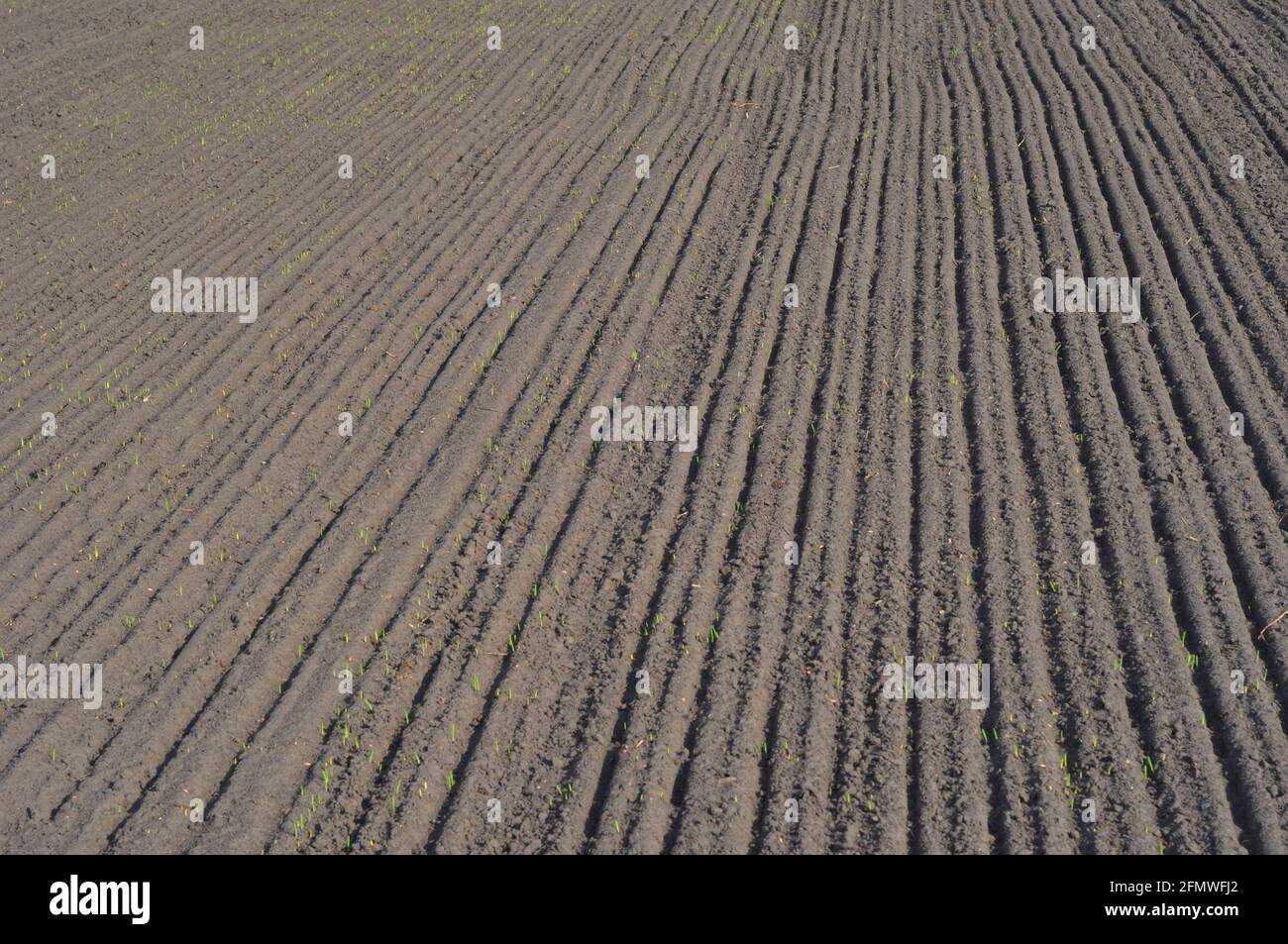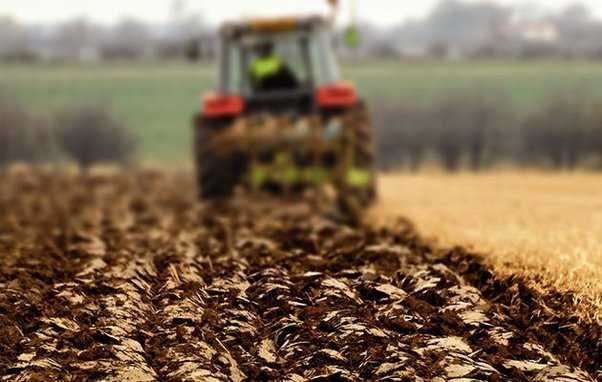- Choosing the Best Siderates for Sandy Soil
- 1. Legumes
- 2. Grasses
- 3. Mustard
- 4. Buckwheat
- 5. Radishes
- Siderate Selection: Key Considerations
- 1. Soil Type
- 2. Climate
- 3. Growth Rate
- 4. Nitrogen Fixation
- 5. Weed Suppression
- 6. Crop Rotation
- 7. Availability and Cost
- Benefits of Siderates for Sandy Soil
- 1. Soil Erosion Prevention
- 2. Increased Organic Matter
- 3. Nitrogen Fixation
- 4. Weed Suppression
- 5. Improved Water Retention
- 6. Disease and Pest Control
- When to Sow Siderates in Sandy Soil
- Choosing the Right Siderate
- When to Sow
- Ploughing Under
- Common Siderates for Sandy Soil
- Recommended Siderates for Sandy Soil
- 1. Crimson Clover
- 2. Winter Rye
- 3. Hairy Vetch
- 4. Buckwheat
- Preparing Sandy Soil for Siderate Planting
- 1. Soil Testing
- 2. Adding Organic Matter
- 3. Choosing the Right Siderates
- 4. Proper Siderate Planting Techniques
- 5. Incorporating Siderates into the Soil
- 6. Repeating the Process
- Ploughing Techniques for Sandy Soil
- 1. Deep Ploughing
- 2. Adding Organic Matter
- 3. Contour Ploughing
- 4. Crop Rotation
- 5. Mulching
- 6. Irrigation Management
- 7. Conservation Tillage
- 8. Soil Testing
- 9. Windbreaks
- “Question-Answer”
- What are the best siderates for sandy soil?
- When should I sow siderates in sandy soil?
- How often should I plough sandy soil?
- Can siderates really improve sandy soil?
- Are there any siderates that are drought-tolerant for sandy soil?
- How long do siderates take to grow in sandy soil?
- Can siderates be used in sandy soil for vegetable gardening?
- “Video” Successfully Growing Food in Sand?! They used a Cuban Technique called "Organopónicos"
Sandy soil can be a challenging growing medium for many gardeners. Its loose texture and low water retention can make it difficult for plants to thrive. However, by incorporating siderates into your gardening routine, you can improve the quality of your sandy soil and create a more hospitable environment for your plants.
Siderates, also known as cover crops or green manure, are plants that are sown and ploughed into the soil to add nutrients and organic matter. For sandy soil, selecting the right siderate is crucial. Some siderates are more suitable for sandy soil due to their ability to improve its structure, increase water retention, and prevent erosion.
One of the best siderates for sandy soil is clover. Clover has deep roots that penetrate the sandy soil, helping to break up compacted layers and improve drainage. It also fixes nitrogen from the air, enriching the soil with this essential nutrient. When sown in late spring or early summer and ploughed into the soil before it flowers, clover can significantly improve the quality and fertility of sandy soil.
Another great siderate for sandy soil is rye grass. Rye grass has an extensive root system that helps bind the loose particles of sandy soil together, reducing erosion. It also adds organic matter and increases water retention. Sow rye grass in the fall and plough it into the soil in early spring for the best results.
Choosing the Best Siderates for Sandy Soil
If you have a sandy soil in your garden, it is important to choose the right cover crops or siderates to improve its fertility and structure. Sandy soil tends to drain quickly and lacks essential nutrients, so choosing the right siderates can help to replenish nutrients, increase organic matter, prevent erosion, and improve water holding capacity.
1. Legumes
Legumes such as clovers, vetches, and peas are excellent cover crops for sandy soil. They have the ability to fix atmospheric nitrogen into the soil, making it available for other plants. Legumes also have deep root systems that help to improve soil structure and prevent erosion. They can be sown in early spring or late summer.
2. Grasses
Grasses like ryegrass, wheat, and oats can also help improve sandy soil. They have fibrous root systems that contribute to soil structure and prevent erosion. Grasses can be sown in early spring or late summer as well.
3. Mustard
Mustard is a great choice for sandy soil as it has deep taproots that can help break up compacted soil and improve drainage. It can be sown in spring or fall.
4. Buckwheat

Buckwheat is a fast-growing cover crop that can add organic matter to sandy soil. It has a fibrous root system that helps to improve soil structure. Buckwheat can be sown in early spring or late summer.
5. Radishes
Radishes have long taproots that penetrate deep into sandy soil, breaking up compacted layers and improving water infiltration. They also scavenge nutrients that might otherwise be lost. Radishes can be sown in early spring or late summer.
Remember to choose siderates that are suitable for your climate and growing season, and consider rotating cover crops to maximize their benefits for your sandy soil.
Siderate Selection: Key Considerations
When selecting the best siderate for sandy soil, there are several key considerations to keep in mind. These factors will help determine which siderate will be most effective in improving soil health and fertility.
1. Soil Type
The first consideration is the type of soil you have. Sandy soil has specific characteristics that can affect the choice of siderate. Sandy soil is well-draining but can be nutrient-poor. Therefore, selecting a siderate that can add organic matter and improve nutrient levels is crucial.
2. Climate
The climate in your region plays a significant role in the success of a siderate. Some siderates thrive in hot and dry climates, while others prefer cooler temperatures. Choosing a siderate that is well-suited to your region’s climate will increase the likelihood of successful growth and soil improvement.
3. Growth Rate
The growth rate of a siderate is another important consideration. Some siderates grow quickly and can provide a fast cover for the soil, while others take longer to establish. Assessing the growth rate of a siderate will help determine how quickly it can provide benefits to the soil.
4. Nitrogen Fixation
If you are looking to increase nitrogen levels in your sandy soil, selecting a siderate that has nitrogen-fixing capabilities is essential. Certain plants, such as legumes, have the ability to capture nitrogen from the air and convert it into a form that can be used by other plants, enhancing soil fertility.
5. Weed Suppression
Weed suppression is another factor to consider when selecting a siderate. Some siderates have allelopathic properties and can suppress the growth of weeds, reducing competition for nutrients and space. Choosing a siderate that can naturally suppress weeds can help you maintain a healthier and more productive garden.
6. Crop Rotation
If you are practicing crop rotation in your garden, it is important to select a siderate that fits well into your rotation cycle. Consider the timing of when you plan to sow and plough the siderate, and ensure it aligns with the needs of the subsequent crop.
7. Availability and Cost
Lastly, consider the availability and cost of the siderate you are considering. Some siderates may be more readily available and affordable in your region, making them a more practical choice. It is also worth considering the cost-effectiveness of the siderate in terms of the benefits it will provide to your soil.
By considering these key factors, you can make an informed decision when selecting the best siderate for your sandy soil. Taking into account the unique characteristics of your soil, climate, and gardening practices will help ensure the siderate you choose is most suitable for improving soil health and fertility.
Benefits of Siderates for Sandy Soil
Sandy soil is known for its low nutrient and water-retention capabilities, which can make it challenging to grow healthy plants. However, using siderates, also known as cover crops or green manure, can be highly beneficial for sandy soil. These crops are grown specifically to improve the soil quality, providing numerous advantages for sandy soil farmers.
1. Soil Erosion Prevention
Siderates, such as clover, rye grass, or buckwheat, have extensive root systems that help bind the sandy particles together. This root network helps in preventing soil erosion caused by wind or rain, which is a common issue in sandy soil. By stabilizing the soil, siderates protect the topsoil from washing away, maintaining the fertility of the land.
2. Increased Organic Matter
One of the major challenges of sandy soil is its low organic matter content. Siderates are excellent sources of organic matter when they are ploughed or tilled into the soil. As these crops decompose, they add valuable organic material, improving the soil’s structure and ability to retain moisture and nutrients. This increase in organic matter enhances the overall fertility of the sandy soil.
3. Nitrogen Fixation
Certain siderates, such as legumes like clover or vetch, have the ability to fix nitrogen from the atmosphere into the soil. Nitrogen is an essential nutrient for plant growth and is often lacking in sandy soil. By planting nitrogen-fixing siderates, farmers can naturally replenish this vital nutrient, reducing the need for synthetic fertilizers.
4. Weed Suppression
Sandy soil tends to have low fertility, which can result in poor competition against weeds. Siderates, with their dense growth and shading ability, act as natural weed suppressors. They outcompete weeds for sunlight, water, and nutrients, preventing them from establishing and spreading in the field. This reduces the need for herbicides and lowers weed-related crop losses.
5. Improved Water Retention
Siderates with deep root systems, such as fava beans or alfalfa, help in improving water retention in sandy soil. Their roots penetrate deeper into the ground, reaching water sources that are inaccessible to other plants. The increased water-holding capacity results in better moisture availability for the main crops, mitigating the effects of drought and reducing irrigation requirements.
6. Disease and Pest Control
Certain siderates, like mustard or marigold, have natural pest and disease-suppressing properties. They release bioactive compounds that help control harmful nematodes, fungi, and insects in the soil. By incorporating these siderates into sandy soil rotations, farmers can reduce the risk of crop damage from pests and diseases, leading to healthier and more robust harvests.
In summary, siderates offer a wide range of benefits for sandy soil. From preventing soil erosion to increasing organic matter, improving water retention, and providing natural pest control, these cover crops are indispensable for maintaining soil health and fertility. By incorporating siderates into their agricultural practices, farmers can overcome the challenges of sandy soil and cultivate successful and sustainable crops.
When to Sow Siderates in Sandy Soil
Siderates, also known as cover crops, are plants that are specifically grown to improve the quality of soil. Sandy soil, in particular, can benefit greatly from the use of siderates, as they help to increase its fertility and water-holding capacity.
Choosing the Right Siderate
When selecting a siderate to sow in sandy soil, it’s important to choose one that is well-suited to these conditions. Some popular siderates for sandy soil include:
- Buckwheat: Buckwheat is a fast-growing siderate that helps to build organic matter and increases nutrient availability in sandy soil. It can be sown from spring to late summer.
- Clover: Clover is a nitrogen-fixing siderate that can help replenish nutrients in sandy soil. It can be sown in late summer or early fall.
- Winter Rye: Winter rye is a hardy siderate that can help prevent erosion and improve soil structure in sandy soil. It can be sown in late summer or early fall.
When to Sow

The best time to sow siderates in sandy soil depends on the specific plant and the climate of your region. Generally, it’s best to sow siderates in early spring or late summer/early fall.
Before sowing, it’s important to prepare the soil by removing any weeds and loosening it with a garden fork or rake. This will help to ensure good seed-to-soil contact and improve germination.
Ploughing Under
Once the siderates have grown to their desired height, it’s time to plough them under. This is typically done when the plants are in bloom, but before they set seeds. Ploughing under the siderates will help to incorporate their nutrients and organic matter into the soil.
| Siderate | Sowing Time | Ploughing Under Time |
|---|---|---|
| Buckwheat | Spring to late summer | When in bloom, before setting seeds |
| Clover | Late summer or early fall | When in bloom, before setting seeds |
| Winter Rye | Late summer or early fall | When in bloom, before setting seeds |
Siderates can be a valuable tool in improving sandy soil and preparing it for future crops. By selecting the right siderate and sowing at the optimal time, you can enhance the fertility and structure of your soil.
Common Siderates for Sandy Soil
Siderates, also known as cover crops, play an essential role in improving the fertility and structure of sandy soil. By planting specific plants as cover crops, you can help prevent erosion, reduce nutrient leaching, and enhance soil organic matter content. Here are some common siderates that thrive in sandy soil:
Buckwheat (Fagopyrum esculentum): Buckwheat is a fast-growing annual plant that is well-suited for sandy soil. It has a fibrous root system that helps to hold the soil together and improve its structure. Buckwheat also has the ability to scavenge and accumulate phosphorus, making it an excellent siderate for soils that are low in this important nutrient.
Clover (Trifolium spp.): Clover is a nitrogen-fixing plant that can greatly benefit sandy soils lacking in this essential nutrient. It helps to improve soil fertility by converting nitrogen from the air into a form that plants can use. Clover also has a deep root system that helps to break up compacted soil and improve its water-holding capacity.
Ryegrass (Lolium spp.): Ryegrass is a fast-growing grass that can quickly establish itself in sandy soil. It helps to prevent soil erosion by providing ground cover and roots that bind the soil together. Ryegrass also improves soil structure and helps to increase organic matter content.
Siderates can be sown in sandy soil during specific times of the year, depending on the region and climate. It is important to choose siderates that are suitable for your specific soil conditions and agricultural goals. By incorporating these common siderates into your sandy soil management plan, you can greatly improve its fertility and structure.
Recommended Siderates for Sandy Soil

Sandy soil can be challenging to work with due to its tendency to drain quickly and lack of organic matter. However, selecting the right siderates can help improve its fertility, structure, and moisture retention. Here are some recommended siderates for sandy soil:
1. Crimson Clover

- Crimson clover is an excellent siderate for sandy soil.
- It fixes nitrogen in the soil, making it a great choice for improving fertility.
- Crimson clover also helps in reducing erosion as its deep root system holds the soil together.
2. Winter Rye
- Winter rye is a hardy siderate that can withstand sandy soil conditions.
- It helps improve soil structure by adding organic matter and promoting microbial activity.
- Winter rye also suppresses weeds, preventing them from competing with crops.
3. Hairy Vetch
- Hairy vetch is a leguminous siderate that fixes nitrogen, benefiting the soil fertility.
- It has deep taproots that break up compacted sandy soil, improving drainage and aeration.
- Hairy vetch can be grown in combination with other plants such as winter rye to maximize its benefits.
4. Buckwheat
- Buckwheat is a fast-growing siderate that can quickly cover bare sandy soil.
- It improves soil structure, suppresses weeds, and attracts beneficial insects.
- Buckwheat also adds organic matter to the soil when tilled in, enhancing its fertility.
These are just a few examples of siderates that can be beneficial for sandy soil. It is recommended to try different siderates and observe which ones work best for your specific conditions. Additionally, it’s important to consider crop rotation and alternate the use of siderates to ensure the long-term health and productivity of the soil.
Preparing Sandy Soil for Siderate Planting
Sandy soil can present challenges for gardeners due to its low nutrient content and poor water retention. However, by incorporating siderates into your gardening practices, you can improve the fertility and structure of sandy soil, making it more suitable for growing a variety of plants.
1. Soil Testing
Before starting any soil improvement activities, it is essential to perform a soil test to determine the nutrient deficiencies and pH level of your sandy soil. This will help you identify which siderates will be most beneficial for your specific soil conditions.
2. Adding Organic Matter
One of the best ways to improve sandy soil is by adding organic matter. This can be done by incorporating compost, well-rotted manure, or other organic materials into the soil. Organic matter helps increase the soil’s water retention capacity and provides essential nutrients for plant growth.
3. Choosing the Right Siderates
When selecting siderates for planting in sandy soil, it is important to choose varieties that have deep roots and can tolerate drought conditions. Some recommended siderates for sandy soil include legumes like cowpeas and clover, as well as grasses like oats and rye. These plants will help prevent erosion, fix nitrogen in the soil, and improve its texture.
4. Proper Siderate Planting Techniques
Once you have selected the appropriate siderates for your sandy soil, it is crucial to follow proper planting techniques. Sow the seeds at the recommended depth and spacing, and make sure to water the area adequately after planting. Regularly monitor the growth of the siderates and remove any weeds that may compete for nutrients and water.
5. Incorporating Siderates into the Soil
After the siderates have grown for the recommended period, it is time to incorporate them into the soil. Cut or mow the plants close to the ground and then turn them into the soil using a shovel or a garden tiller. This technique, known as green manuring, adds organic matter to the soil and improves its structure and fertility.
6. Repeating the Process
Improving sandy soil is an ongoing process, and it may take several cycles of siderate planting and green manuring to see significant improvements. Regularly testing the soil, adding organic matter, and incorporating siderates will gradually transform your sandy soil into a fertile and productive garden bed.
By following these steps, you can effectively prepare sandy soil for siderate planting and create an environment that promotes healthy plant growth and reduces soil erosion. With time and patience, you can turn your sandy soil into a thriving garden oasis.
Ploughing Techniques for Sandy Soil
Sandy soil has unique characteristics that require specific ploughing techniques to ensure optimal crop growth and soil health.
1. Deep Ploughing
Deep ploughing is essential for sandy soil as it helps break up compacted layers and improves water and nutrient retention. It is recommended to plough the soil to a depth of at least 8-12 inches.
2. Adding Organic Matter
Sandy soil lacks organic matter, which is crucial for moisture retention and nutrient availability. Before ploughing, incorporate well-decomposed organic matter such as compost or manure into the soil. This will help improve the soil structure and fertility.
3. Contour Ploughing

Contour ploughing is highly recommended for sandy soils to minimize erosion and uneven water distribution. Ploughing along the contour lines of the land helps prevent water runoff and allows it to seep into the soil, reducing the risk of soil erosion.
4. Crop Rotation
Implementing crop rotation is beneficial for sandy soil as it helps prevent nutrient depletion and control pests and diseases. Rotate crops that have different nutrient requirements to maintain soil fertility and reduce the risk of soil-borne diseases.
5. Mulching
Mulching sandy soil helps retain moisture and control weed growth. Apply a layer of organic mulch such as straw or wood chips around the base of plants to reduce evaporation and improve water penetration into the soil.
6. Irrigation Management
Irrigation plays a crucial role in sandy soil as it can quickly drain away moisture. Opt for regular but deep watering to ensure adequate moisture reaches the crop’s root zone. Consider using drip irrigation systems to minimize water loss through evaporation.
7. Conservation Tillage
Conservation tillage practices, such as minimum tillage or no-till farming, help preserve soil structure and minimize erosion in sandy soil. These techniques reduce soil disturbance and promote the growth of beneficial microorganisms.
8. Soil Testing

Regular soil testing is essential to monitor nutrient levels and pH in sandy soil. Based on the test results, adjust fertilizer application rates to meet the specific crop’s needs and prevent nutrient imbalances.
9. Windbreaks
Sandy soil is prone to wind erosion, which can lead to the loss of topsoil and nutrients. Planting windbreaks, such as trees or shrubs, along the edges of fields helps reduce wind speed and protect the soil from erosion.
By implementing these ploughing techniques, farmers can better manage sandy soil and improve crop growth and yields while preserving soil health for future generations.
“Question-Answer”
What are the best siderates for sandy soil?
Some of the best siderates for sandy soil include hairy vetch, crimson clover, cowpeas, winter peas, and rye grass. These plants are known for their ability to improve sandy soil by adding organic matter, increasing soil fertility, and preventing erosion.
When should I sow siderates in sandy soil?
The best time to sow siderates in sandy soil is in the early spring or late summer. Sowing in the early spring allows the plants to establish before the hot summer months, while sowing in the late summer allows for fall growth and provides winter cover, which helps prevent erosion.
How often should I plough sandy soil?
Ploughing sandy soil should be done sparingly, as excessive ploughing can lead to soil erosion. It is best to plough sandy soil only when necessary, such as before sowing siderates or when preparing the soil for planting. In general, it is recommended to plough sandy soil no more than once or twice a year.
Can siderates really improve sandy soil?
Yes, siderates can greatly improve sandy soil. They help add organic matter to the soil, which improves its structure and water-holding capacity. Siderates also enhance soil fertility by fixing nitrogen from the atmosphere and making it available to other plants. Additionally, these plants help prevent erosion by providing ground cover.
Are there any siderates that are drought-tolerant for sandy soil?
Yes, there are several siderates that are drought-tolerant and well-suited for sandy soil. Examples include cowpeas, which have deep roots and can tolerate both drought and poor soil conditions, and rye grass, which has high drought tolerance and can help prevent erosion on sandy slopes.
How long do siderates take to grow in sandy soil?
The time it takes for siderates to grow in sandy soil can vary depending on the specific plant species and growing conditions. In general, most siderates will begin to germinate within a week or two after sowing and can be ready for incorporation into the soil after about 60-90 days. However, some fast-growing varieties, like winter peas, may be ready for incorporation in as little as 30-40 days.
Can siderates be used in sandy soil for vegetable gardening?
Yes, siderates can be used in sandy soil for vegetable gardening. They can help improve soil fertility, increase water-holding capacity, and prevent erosion. Sowing siderates before or after vegetable crops can also help suppress weeds and provide a natural source of nitrogen and other nutrients, reducing the need for chemical fertilizers.







